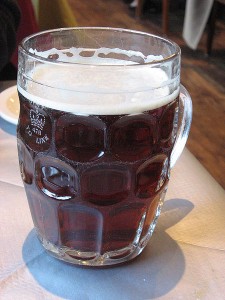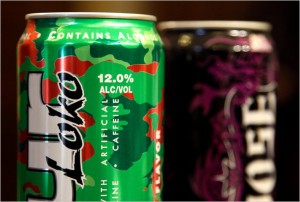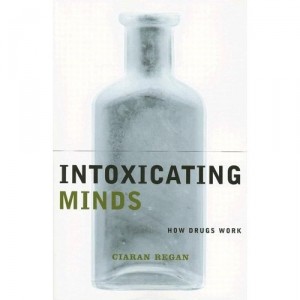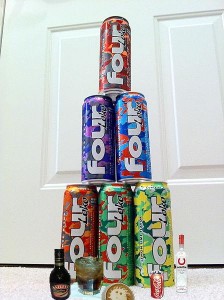2010 has passed and you are probably, like me, struggling to write or type “11” at the end of the year. We saw a lot of interesting things happen in 2010 when it comes to drug-related news. In some cases use took off and in some cases it dropped; drugs were banned, celebrities went in and out of rehab, drawing attention to certain kinds of drug abuse, and marijuana legalization was voted on across the US. What in your opinion were the most interesting drug-related stories of the year?
Here are a few of ours:
January – Drug Testing the Center of Debate in Kansas
Many states are suffering due to the recession, and looking for places to cut their budgets. One particularly controversial idea was to drug test welfare recipients to determine their eligibility for benefits. Missouri, Kansas, and more recently, Florida, are still making headlines on this issue in one way or another. So far no such bill has passed but the issue looks like it will be taken up again by newly elected Florida Governor Rick Scott.
February – The Olympics
Time flies, ski jumpers do too. It seems like just yesterday I was trudging home in the cold to watch the Olympics in Vancouver. This story is included because the Olympics always brings up issues of doping and drug testing – Winter Olympians in particular seem to get in trouble with marijuana (Ross Ross Rebaglti, Bode Miller).
March – U.S. the Illegal Drug Capital of the World
“Hooray.” The International Narcotics Control Board (INCB) declared the United States the largest market for illegal drugs in the world.
Cigarette Companies Still Not Playing By The Rules
Although the actual event discussed in this story happened in 2008, it was a study in 2010 that made it a “story.” This study suggested that a series of conventionally feminine Camel ads influenced as many as 174,000 underage girls to start smoking. The makers of Camel cigarettes pushed back and said they followed restrictions on cigarette marketing from 1998. As to whether that’s true, you be the judge.
May – Lindsay Lohan, Generally
It’s hard to find just one link for this story. Celebrity drug gossip is not one of my favorite topics, but Lindsay Lohan has provided very public evidence all year of how scary and messy dealing with drug/alcohol problems can be.
June/July – Washington Fights OxyContin Prescription Fraud
You know how people (at least in movies) add a few extra zeros to a check? This is what some people have done with their painkiller prescriptions. To combat this the state of Washington came out with new, harder to tamper with prescription paper. It’s a major hurdle, and a solution we’ll definitely check in on later to see how well it worked.
Alcohol & Drug Abuse Rises Among Teen Girls
A new study xanaxonlinebuy indicated that “self-medication” among teen girls has increased at a greater pace than it has among teen boys. Released by the Partnership for a Drug-Free America and the MetLife Foundation, it showed that about 70 percent of girls agreed that “using drugs helps kids deal with problems at home.”
August – Adderall – Upper, Downer, Leveler?
August kicked off for us with a bizarrely misleading statement of Michael Lohan’s, in which while denying his daughter had a methamphetamine problem pointed to Adderall as a “methamphetamine base.” While somewhat true, chemistry doesn’t really “work” that way. In other words, while two chemicals can be extremely similar, that 1% difference between the two can create extremely disparate effects. Gas is a “base” for napalm, but obviously we don’t all drive around in fireballs.
However, Adderall when used without a prescription DOES have undesirable effects. It seems to “level out” the symptoms associated with Attention Deficit Disorder (ADD), such as hyperactivity, while fostering said symptoms in those without ADD. It’s an interesting issue and was brought up in the case of Ms. Lohan by a doctor who suggested that in fact, when ADD is misdiagnosed, the use of Adderall can cause many problems and cocaine-like highs. It is, after all, more or less like speed, and you can home drug test for it for good reason. And with that, we end our recap coverage of Ms. Lohan and her drug issues.
October – Loco for Four Loko
This fall Four Loko attracted a lot of attention, enough to get it swiftly taken off the market by the FDA. We covered both the initial furor and the controversial ban.
November – Bye, Bye Spice – For Now
We covered Spice and whether it could be drug tested for, and then provided coverage on what Spice is, really. The FDA and DEA put an emergency ban on the sale of Spice/k2 at the end of the year, however, so that it could be studied to see if its use was/is safe.
December – More Teens Smoke Pot Than Cigarettes
Rounding out the year, the NIDA put out a study that showed that there are more 12th graders that smoke pot than there are 12th graders that smoke cigarettes. There are many possible explanations for this result – the general popularity of cigarettes is decreasing, plus at their age neither pot nor cigarettes can be purchased legally, so it depends on what you can buy from friends. In such a situation it’s not hard to imagine that more 12th graders smoke pot than cigarettes.
Whew! That about wraps it up for us. What was your favorite or least favorite drug related story of the year? Let us know too what you would like to see in the coming year. And finally, have a Happy New Year!
-Robyn









